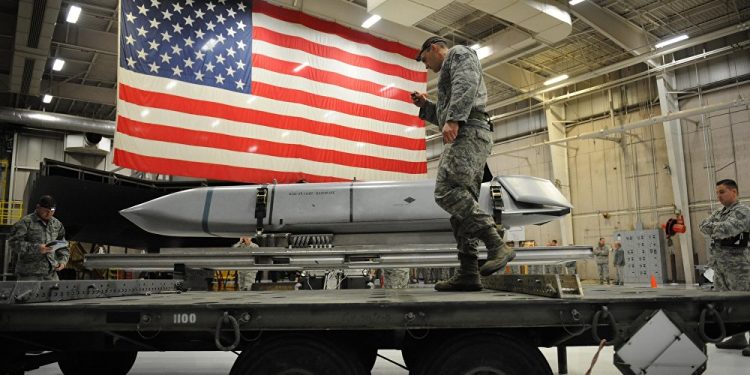Washington: President Donald Trump will unveil a review of US missile defense capabilities Thursday that aims to counter threats from North Korea and Iran while adapting to ever more sophisticated weapon systems being developed by Russia and China.
Top among the concerns highlighted by the Missile Defense Review is the speed at which rivals, particularly Beijing and Moscow, are pushing ahead with new technologies such as hypersonic missiles that can thwart traditional defense systems.
Flying at low altitude, many times the speed of sound, and able to change direction, these weapons don’t follow a ballistic arc so are much harder to track and cannot be intercepted.
As a result, the Pentagon is urgently looking at ways to enhance its ability to track hypersonic missiles, primarily by using existing sensors that are deployed in space.
“Enhancing our ability to track these emerging threats will make defending against cruise missile and (hypersonic) threats possible,” the Missile Defense Agency (MDA) said in a summary of the review.
Trump ordered the analysis in 2017, amid heightened tensions with Pyongyang over its nuclear program – the first such review of America’s ballistic defenses since 2010.
The MDA said it would conduct a study to assess the feasibility of creating a space-based interceptor system, in which an orbiting craft of some sort would be equipped with missiles that could destroy an incoming warhead while it was in space.
Another focus for the MDA will be developing ways to knock out a ballistic missile immediately after it has launched.
Currently, ground-based anti-missile technologies focus on intercepting warheads while they are in the “midcourse” phase, flying through space.
By attacking the missiles while they are still in their “boost phase” soon after launch, the MDA could add a layer of defense for America and its allies.
One way of doing this would be by adding a new type of missile to F-35 stealth fighters patrolling near a suspected launch site, such as in a hypothetical conflict with North Korea, the MDA said.
“Intercepting offensive missiles in their boost phase would increase the likelihood of successfully countering missile threats, complicate an aggressor’s attack calculus… and reduce the number of midcourse or terminal active defense interceptors needed to destroy the adversary’s remaining offensive missiles,” the MDA said.
The MDA is also looking at ways of boosting its “directed energy” — or laser — capabilities to take out ballistic missiles.
The review was due to be released last year, but its publication saw repeated delays
Trade & Diplomacy
How do trade wars end? To answer that, we have to ask ourselves, how do wars end? The answer is...
Read more





































